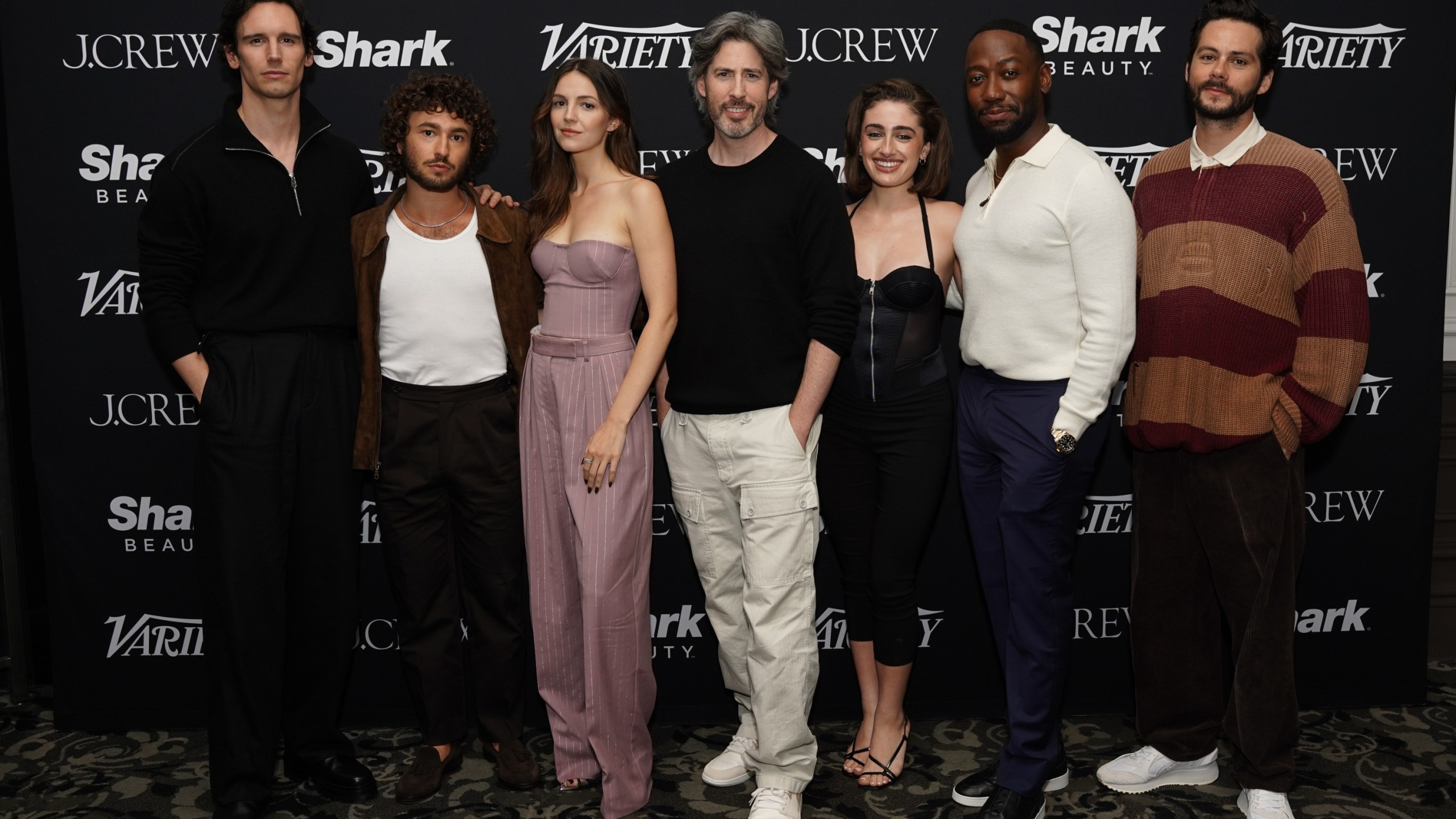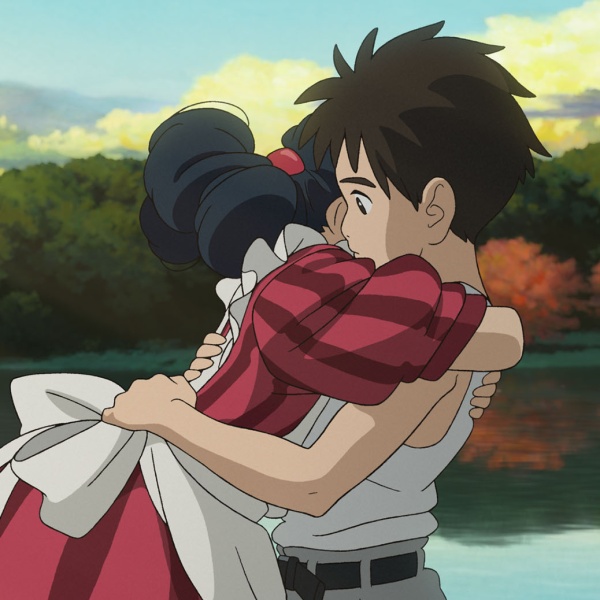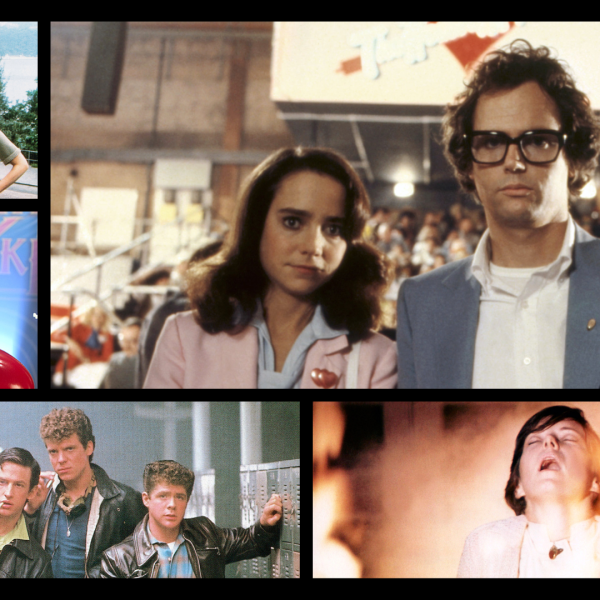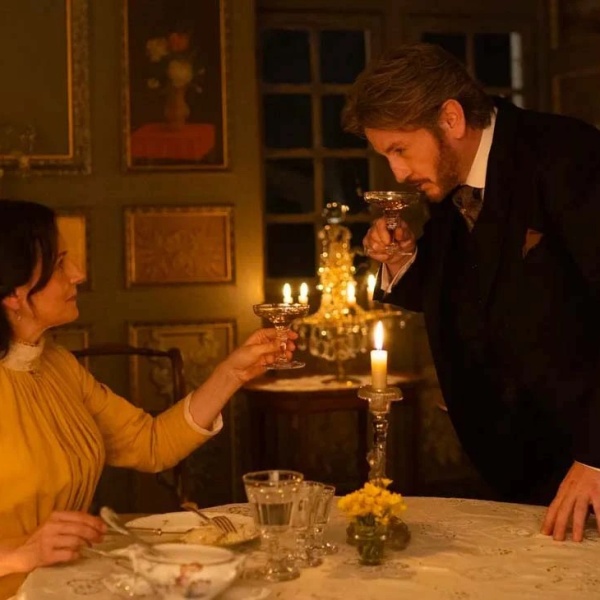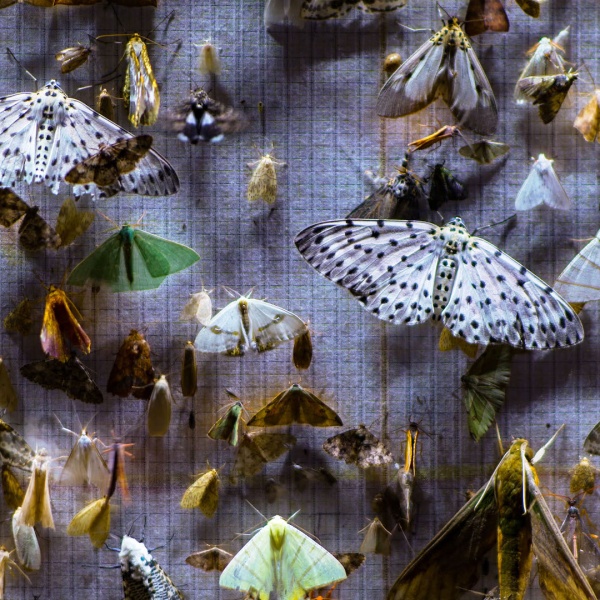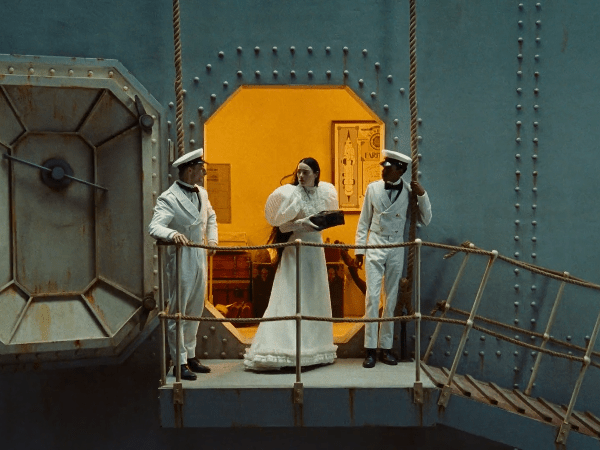In 2008, with two lauded features already under his belt (“Thank You for Smoking” and “Juno”), Jason Reitman took a break from one of his professional dreams (be a filmmaker) to fulfill another (be a writer on “Saturday Night Live”). For one week, the writer/director joined the crew of the venerated live sketch comedy show (it was the Ashton Kutcher-hosted episode), an experience he likens to joining the Los Angeles Lakers for a game.
Like most comedy wonks, Reitman had grown up revering “Saturday Night Live,” an affection he channels for his latest, “Saturday Night,” which he also wrote with Gil Kenan. Set on October 11, 1975, the film follows the wild, rag-tag original cast and crew (played by a truly stunning cast of stars: Gabriel LaBelle, Rachel Sennott, Cooper Hoffman, Dylan O’Brien, Cory Michael Smith, Lamorne Morris, Matt Wood, Willem Dafoe, Matthew Rhys, Nicolas Braun, J.K. Simmons, Kim Matula, Andrew Barth Feldman, Emily Fairn, Tommy Dewey, Kaia Gerber, and Jon Batiste, just to name a few) as they attempt to launch the very first episode of the NBC series.
Nothing, of course, goes to plan. How could it? It’s 90 minutes of live comedy. For 109 of its own nonstop minutes, Reitman and company channel all that freneticism, passion, and fun to take audiences inside a little bit of what it must be like to launch an episode of the series, now about to celebrate its (insane!) 50th season. Sound nuts? It is.
Ahead, Reitman — just hours before the film‘s raucous Toronto International Film Festival premiere — walks IndieWire through the punchy method to all the madness, from condensing “SNL” lore into just one night and finding his incredible cast, to a truly incredible story about Billy Crystal (who had been on deck to do a set on that first show) saving the day, with a heartbreaking, “only in Hollywood!” edge.
The following interview has been edited and condensed.
IndieWire: What’s your first “Saturday Night Live” memory?
Jason Reitman: I have a very specific memory, which is just the thought going through my head, “I can’t believe they do this every week.” It felt like something that was like, “Oh, is this a special that happens once a year?,” and being told, “No, this is every Saturday.” I was like, “Every Saturday, they do 90 minutes of new sketch comedy?” That boggled my brain. What’s yours?
Well, I have a lot of love for Happy Fun Ball. “Don’t taunt Happy Fun Ball.”
“Don’t taunt Happy Fun Ball,” yeah, yeah, yeah. I love that era. Or Big Red. That’s a very specific moment.
Bad Idea Jeans.
Bad Idea Jeans, three-legged jeans, and Jack Handey. “Sometimes I like to tell my kids that I’m taking them to Disneyland, and I take them to a burned-out warehouse, and I say, ‘Oh no, Disneyland burned down.’ They didn’t find it funny, but I think one day they will.”
What was the car, the clay car, where you would just take pieces of clay off and on? Do you remember that one? The Adobe.
I have a vague memory of that.

You mentioned the insanity of “SNL” being made each week. I know you did a little time there; you did a guest week on “SNL.”
“A little time,” how dare you. [Laughs] You’re right. It did feel like I got to dress up for the Los Angeles Lakers for one night.
But you translate that frenzy into the movie. This is about 90 minutes, mostly told in real-time. When did the idea to do real-time come in?
From the beginning. I had already been thinking about a movie I want to do in real time, and I’ve been obsessed with every example I’ve seen of that. I think that the best one is “Victoria,” which is just extraordinary. It’s a work of genius. I’ve also always been a fan of these 1970s movie, movies that are chaos, and movies where you are dropped into situations where you don’t know who half the characters are, you can only hear half the things that are happening. I’m just a big fan of that experience as a moviegoer.
It took me 15 minutes to settle into the movie.
It’s funny, because I think in my early conversations with Sony, that was also their concern … just like, “Are we onboarding the audience? Are we giving them a chance?” My thought has always been, “That’s not the point. The point is you jump out the airplane, and you’ll catch up.”
I like when a movie trusts an audience.
Oh, thank you for saying that. Yes. Nothing thrills me more than the director trusting me as an audience member, that, “Don’t worry, you’re going to figure out why I made this.”
So what we were trying to balance on this movie is, some of the audience is going to come in, they’re going to be comedy nerds like me. They’re going to go, “Oh, Al Franken and Tom Davis. I know exactly who they are and why they’re ordering blood.” And then there’s going to be other people who are lost in the chaos, which is a whole other experience and needs to be equally joyful, as long as you begin to understand why we’re tracking all these people.
As a writer, that became a question of, “OK, everyone has an individual arc. You need to at least see a few points of them in that arc. And in the last 15 minutes of this movie, everything has to come together at the last second.” The challenge, of course, is: How do you give every character enough screen time within the braiding of those sequences that you feel like each one landed?
How did you and Gil pick who those people are going to be? Obviously, Lorne Michaels is the North Star, but how are you deciding who’s getting how much time and who we’re going to get to really know? For instance, I wanted more Jane Curtin.
It became a question of, “Alright, how much time do you need to spend with Jane to get the sense of who she was?” We started working on this monologue, and I also worked with Kim on it, and a lot of these came out of conversations with people like Kim and Lamorne about their experiences as actors. Lamorne would talk to me about finding his place on “New Girl” and being the only Black actor there and trying to understand what was his identity on that show, and that would inform how we portrayed Garrett.
Kim Matula talks about being beautiful in her twenties and trying to figure out who her identity as an actor is and being really funny and people not giving a shit. It’s like, “Wait, but I’m funny too.” It’s like, “OK, sure, smile.” So that monologue became about her opportunity to talk about that.
And then someone like George Coe isn’t in the film at all.
With George Coe, the trick was that he was older. We always saw this as a movie about generational shift and one generation ripping television out of the hands of another. We always just thought, “Well, this is confusing because George is one of the kids, but he’s not a kid,” and we didn’t want that to be visually confusing. So unfortunately, George Coe got left out of the script.
But also, Eugene Lee is not on screen, and that’s a thing that bums me out still, but here’s 80 speaking roles already. Eugene Lee, who is a genius production designer who did extraordinary work on Broadway, did his first television show with “Saturday Night Live” and created an iconic sound stage that exists to this day, it bums me out that he’s not on screen, but at a certain point there’s only so much room.
You do find the space to add things, especially in the third act, where it’s just like, “No, Lorne didn’t find Alan Zweibel in a bar that night,” but you’re having fun with those things.
What’s interesting is that, when we started asking people their memories, they start sharing stories that are all around that night. So Lorne Michaels did find Alan Zweibel in a bar, he found him a couple months earlier, but when talking to Alan about his experience of how he wound up on the show, that’s what was core, is being in a bar, watching a stand-up comedian just ruin all of his jokes and Lorne Michaels asking, “What is going on here?” and leafing through his book of jokes and going, “You want a job?” The movie became about how do we take all these memories and weave them together into a fantasia of what it felt like when this show came to life?
How involved were the real people, and how involved did you want them to be?
[Laughs] Great question. We wanted their memories, and they were very generous with them. But I’ll give you a great example. Billy Crystal is someone I’ve known for years, because my dad made a movie with him, and when I reached out to him, I thought, “Oh, this will be fun.” And he clearly is heartbroken to this day about what happened to him on opening night.
First of all, hearing him tell the story, hearing how heartbroken he was to this day, informed how we portrayed it on screen. Beyond that, we’d been looking for a copy of the screenplay, and nobody had it. Nobody had it. The only person who had the script from opening night was Billy Crystal. As a result, he let us scan the script, and when the characters are holding the script on screen in the movie, they’re holding [copies of] Billy’s copy. Anytime you see all the actresses flipping through new pages on the seventeenth floor or anyone walking around, George Carlin’s whipping around pages in his hand, that’s all Billy’s script.

Was he keeping it in a lock box somewhere?
We thought he was going to be the last person who had it, and we asked him, “Any chance you still have a copy of a script for opening night? We want to read the Alexander the Great sketch that never made it to air.” And he goes, “I think I can find it.” An hour later, “I found it.” We went to his house and he started flipping through the pages, and then he pointed to a blank page and went, “That’s where I was supposed to be.”
Oh, that’s heartbreaking.
It just shows that you can have a career as successful as Billy Crystal, and you can look back at this opening night and think, “That was a night to be part of history.” It’s like saying, “I was supposed to have a set at Woodstock, and they cut me for time.”
You have so many delightful surprises with your cast. There are moments in this movie where Dylan is Dan. Who most surprised you most in the process?
Well, clearly, I did not think I’d be casting two British people as Laraine Newman and Gilda Radner, but it’s all about capturing one piece of essence. And with Dylan, for example, it was about the cadence of his voice. Can he look a little like Dan Aykroyd? Sure, fine, put on a mustache and get the right clothes. But it’s more about his ability to [do the cadence]. He’d get this rhythm into his voice. And also Dylan’s brain, his ability to be articulate, verbose, and factual [was important], as opposed to Lamorne’s ability to do the lyrical nature of Garrett’s New Orleans voice. In the case of Ella Hunt, to find that kind of empathy in her eyes to evoke Gilda Radner. It’s always about one thing.
Casting Nicholas Braun as both Jim Henson and Andy Kaufman, I think people think there’s some sort of punchline there, and there’s not.
We wrote Jim Henson for Nick. We would just sit there in the room saying things like, “Fuck rags for rent,” and imagine Nicholas Braun saying it and be like, “This is going to be great.” Benny Safdie was actually supposed to play Andy Kaufman, and Benny became unavailable because his film got green-lit, this one he just finished directing. As we kept on thinking about who would be right for Andy Kaufman, we just kept on coming back to Nicholas Braun. And then we thought, “Well, yeah, on ‘SNL,’ you can play more than one character.”
What’s crazy to me is how many people have no idea that it’s the same actor. Nicholas Braun fans obviously know, but I’ve had plenty of people ask me what actors played those two roles.
You have so crazy and intense sequences in the film, is there one that is a particular standout?
I loved shooting JK Simmons and Cory Michael Smith in their showdown, because they’re both just brilliant actors and embodied their roles, and it kind of defined these two generations, going head to head. The blood was fun, the llama was fun, the big one-r, where you introduce all these characters, is where you felt the crew coming together.
Honestly, what was most exciting is when the crew felt everything on the line as much as the cast did, when our crew felt like we’re all doing this choreographed dance number and we want to nail it.

It’s funny you mentioned JK. There are going to be a lot of young people who are going to learn a lot about Milton Berle that they did not know.
I like that. There’s a lot of young people who are going to go, “I know one thing about Milton Berle.”
A lot of those younger people are going to want to run to Wikipedia or to Tom Shales’ book after they see the film. Is that exciting for you?
Even though I had to become a journalist to make the movie, at the end of the day, the feeling I want to evoke is the most important aspect of it. I want you to walk out of the film energized and excited and wanting to go that very Saturday and watch “SNL.”
Pretty early in your career, you were put onto the awards path with nominations and awards for films like “Juno” and “Up in the Air.” This is bringing you back into that world. What does that feel like? Do you pay attention to that stuff?
It’s weird, right? Because my first couple films were a comedy about the head lobbyist for Big Tobacco and another movie about teen pregnancy. I really didn’t think that was the road I was going. I want to make good films. Now we’ve made a movie about “Saturday Night Live,” and what I’m most proud of is the craftsmanship of everyone who worked on it.
Jess Gonchor, rebuilding the entire two floors of “Saturday Night Live” of Rockefeller Center in a way that you could actually remake this movie. Danny Glicker’s costume work, which I think is out of control good. Jon Batiste’s score, which I don’t think there’s a score like it anywhere on Earth. Eric Steelberg, my lifelong cinematographer, who again turns the camera into another character in the film and was shot on 16mm. What I’m most proud of is the people that I got to work with, particularly many of them I’m working with my entire life.
When you say that about the production design, I’ve been to “Saturday Night Live” a couple of times, and in the film, just—
You’re there.
You’re there. What was it like the first day you walked onto set and felt, “Wow, I’m here.”
When we would bring people who work or worked on “SNL” to our set, they knew exactly where to go. I’d be like, “We should go up to Lorne’s office,” and they’d be like, “Yeah, I know how to get there.” It’s funny — the one room that all NBC people point to is the stairwell. The stairwell is an exact copy, and every person who’s worked in Rockefeller Center goes, “I’ve cried in that stairwell.”

People are going to get to see this movie in the theater.
Yes. It’s a big, complicated movie that was meant to be seen on the big screen, and more importantly, to be seen with an audience. Again, when you see the movie, hopefully you recognize the amount of craftsmanship that went into it from the entire crew. When you watch “SNL,” it’s very easy to think only about the actors and not the hundred people behind the scenes who pull off the magic trick that is making that show. There’s the camera people and sound people and people who are moving the stage flats, and they work together like ballerinas, truly.
I feel the same thing about this movie — that there’s a hundred people who made this film, and their work is extraordinary, and what they had to pull off on a daily basis to evoke that kind of exhilaration made me look like a better director than I am. We were all in the car together.
What’s next?
Honestly, I would do 30 “Saturday Nights” in a row. If we could do 1976, ’77, ’78, I think the entire crew would come back and do it. It’s the most joyful filmmaking process I’ve ever had. The writing, the shooting, the editing, working with the cast. People always say, “Oh, I didn’t want the shoot to end,” but no one wanted the shoot to end. I think we could have gone into 1976, and everybody would have showed up on Monday.
“Saturday Night” screened at the 2024 Toronto International Film Festival. Sony will release it in New York, Los Angeles, and Toronto theaters on September 27, with a limited release to follow on October 4 and a wide release on October 11.
